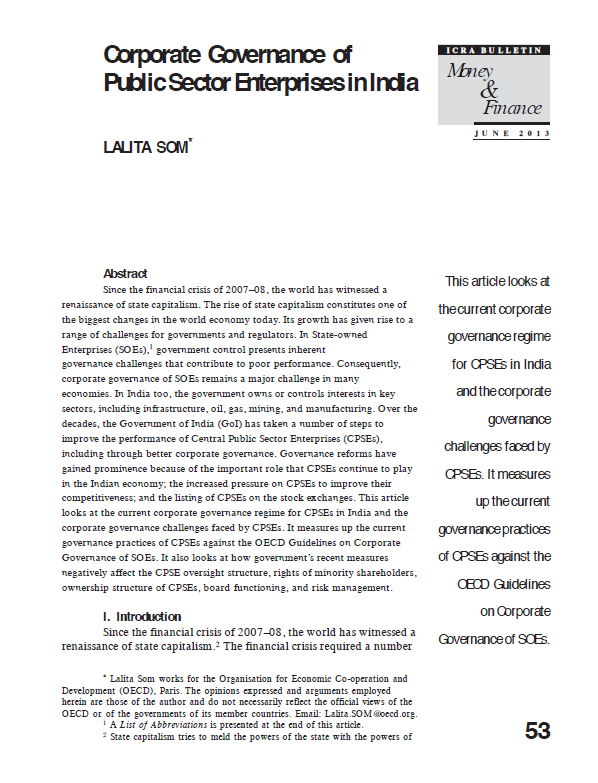Corporate Governance of Public Sector Enterprises in India

Since the financial crisis of 2007–08, the world has witnessed a renaissance of state capitalism. The rise of state capitalism constitutes one of the biggest changes in the world economy today. Its growth has given rise to a range of challenges for governments and regulators. In State-owned Enterprises (SOEs),1 government control presents inherent governance challenges that contribute to poor performance. Consequently, corporate governance of SOEs remains a major challenge in many economies. In India too, the government owns or controls interests in key sectors, including infrastructure, oil, gas, mining, and manufacturing. Over the decades, the Government of India (GoI) has taken a number of steps to improve the performance of Central Public Sector Enterprises (CPSEs), including through better corporate governance. Governance reforms have gained prominence because of the important role that CPSEs continue to play in the Indian economy; the increased pressure on CPSEs to improve their competitiveness; and the listing of CPSEs on the stock exchanges. This article looks at the current corporate governance regime for CPSEs in India and the corporate governance challenges faced by CPSEs. It measures up the current governance practices of CPSEs against the OECD Guidelines on Corporate Governance of SOEs. It also looks at how government’s recent measures negatively affect the CPSE oversight structure, rights of minority shareholders, ownership structure of CPSEs, board functioning, and risk management.



